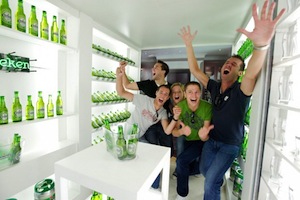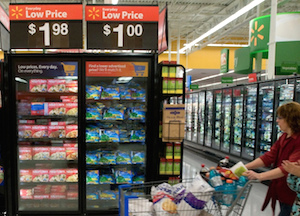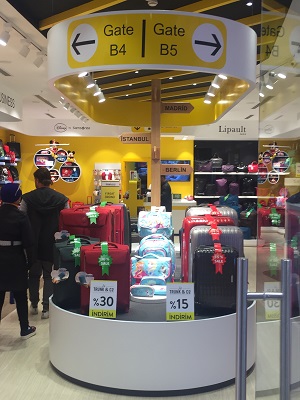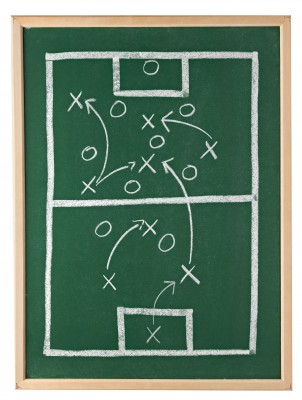
Every store in the world is different. Sure, chains have similarities, but individual branches are unique, with subtle changes in layout. Each store is in a different physical location, and therefore has a different quantity and mix of shoppers.
Our shopper marketing consultancy work clearly demonstrates that getting the right products in the right stores with the right marketing mix has a massive impact on both the topline and the bottom line, yet too often broad and generic segmentations are applied by manufacturers to this important strategic analysis.
Managing channels – groups of outlets – is an enormous challenge. As mentioned above, each store is unique, so in theory every outlet should be treated differently. But it would be impossible (so far) to create and execute a specific plan for each outlet.
So how do we get the balance between manageability and effectiveness? We create channels – a way of segmenting outlets into manageable, ideally homogenous, groups.
The challenge is the balance between these two factors (manageability and homogeneity) and whilst retailers are quite good at this, many manufactures seem to sway towards manageability and ignore homogeneity.
A case in point. Last night I was in Hong Kong, staying in a Holiday Inn Express – a no frills hotel chain. No minibar. No bar, even. The restaurant is outsourced (and as it was Thai, and I live in Thailand, it held little appeal to me).
Just outside the door is a 7-11 . It had many of the usual categories, but eschewed or minimized many of those that typically (in Asia at least) take up much of a convenience store’s space. Gone was hot food. In its place masses of confectionery and snacks, and a range of around twenty different wines. This was no ordinary convenience store. This was a walk in minibar!
Now I’m pretty sure that if I was to ask any manufacturer in Hong Kong to list out their channels, they wouldn’t have ‘walk in minibar’ as a channel. Many would (sadly) list their channels as ‘modern’ and “traditional”.
Yet 7-11 in Thailand have 12 different store types. They reason that the shoppers needs near a factory might be different from those in an office or at a transport hub. Rarely are the manufacturers I encounter planning beyond ‘convenience stores’. The implications of this are huge. Funds and focus are spread across too many stores – resources are wasted because they are spread across too broad a range of outlets.
Good shopper research can be enormously helpful in quantifying opportunities; but whilst research can help understand better how to segment channels more effectively, there are a few considerations I have found which can help take a step towards a more powerful and shopper-centric channel structure, even in the absence of research data.
How to focus shopper marketing on the right stores
Put the shopper first. How does the shopper look at stores? If the shopper uses stores differently it could be a different channel. What currently sells in different outlets or outlt groups can often be seen as a solid proxy for different shopping behavior (assuming similar ranges are available). Of course spending time in-stores is a great way to get a feel for shopper behavior.
Think big. If a current channel represents a significant share of existing sales (or growth potential) there is a better chance of creating value out of further segmentation. In the situation above, if convenience stores represent a small share of category sales then further segmentation may be low value. Yet of course there is an exception which proves the rule – C-stores would be relatively unimportant in total for the wine category, which brings me on to…
The channel contains loads of your target shoppers but they don’t usually buy much per store. There is a chance (as the case is here) that a sub-set of stores is responsible for all of the sales. Whilst the sales per store are low, this is merely an average which hides some stores which could sell a lot, and many that cannot.
Look for an unmet need. Again, the situation of alcohol in this Hong Kong store is a great example of this. Business travelers and tourists like a drink. They can’t do it in this hotel, but the need is still there. Unmet consumption needs create new shopping missions, and that creates new opportunities in the stores that are best place to meet those needs.
Go one step too far. If you’re not sure that there is a valuable segmentation there – have a go anyway. You can always recombine segments when you realize that the gains are not sufficient or that the marketing mix wouldn’t actually be too different across those segments.
Go to stores (I know, I say it a lot, but it is true!). Look and see. Are any manufacturers doing anything different? Is the retailer?
Back to my store in Hong Kong. There was another difference to this store. The lady behind the counter spoke perfect English. She was polite attentive, wished me well and said see you again. I can’t swear that this was a deliberate ploy but that was service targeted at foreign visitors, not a local grabbing a coke on the way to work.
Take a look at the way you segment stores. If your using generic, industry definitions, then there is a chance you are missing out on a profitable distinction at a more refined level.





